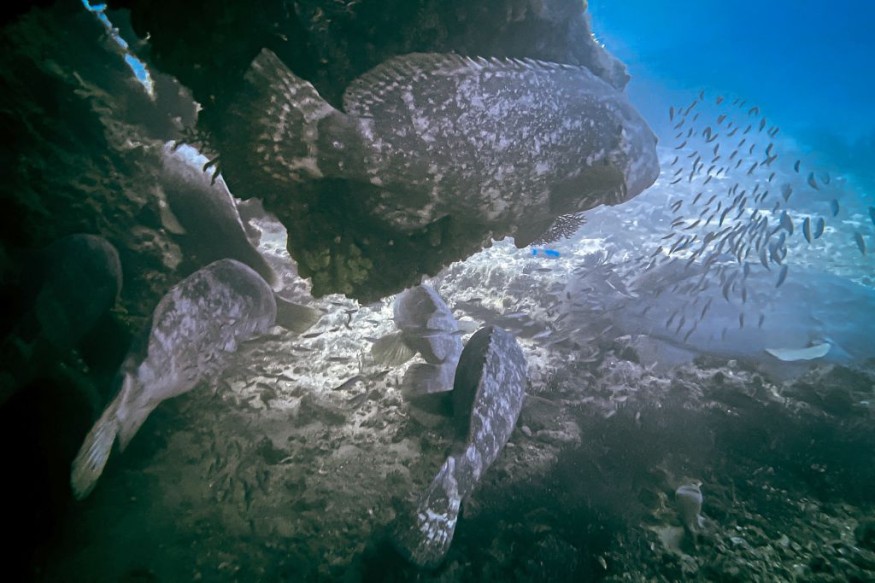
Divers are always delighted to swim with goliath grouper, a colossus of a fish that can weigh up to 360 kilograms (nearly 800 pounds), however scientists warn that their numbers are declining since the United States government permitted large grouper fishing to restart.
The goliath grouper is most commonly seen in shallow tropical seas among coral and man made reefs.
Its range covers the United States' Gulf of Mexico and Florida Keys, the Bahamas, the majority of the Caribbean, and the majority of the Brazilian coast.
Fewer population
The diving industry have reported that they observed fewer number of goliath groupers at the sea.
Since 2013, this critically important species in the world's waters has seen dramatic population decreases.
According to James Locascio, Mote Marine Laboratory and Aquarium Fisheries Habitat Ecology and Acoustics Research Program Manager, a study was conducted at six different spawning aggregation sites off Jupiter, Florida, and found that Goliath grouper abundance had declined at all but one of the six sites between 2013 and 2022.
The species was showing signs of recovery based on data obtained at different spawning sites in 2013 to track population trends.
However, as part of his NOAA-funded research, Locascio discovered much fewer Goliath grouper at most of the same historical spawning sites where prior population estimates were made.
"Due to the moratorium on commercial harvest of the species there is not yet enough data to estimate future stock-recruitment or stock assessment of this species," Locasio said in an interview. "It is our job now to provide reliable data on Atlantic Goliath grouper abundance, which are used as a prerequisite to informed management decisions."
Fishing for Goliath grouper has been prohibited for more than 30 years.
However, in the last year, Florida officials determined that the population had recovered sufficiently and permitted 200 of the fish to be captured and killed in state waters each year.
Unfortunately, the goliath grouper lends itself to overfishing because it develops slowly-it can live for up to 30 years-and reproduces slowly.
The International Union for Conservation of Nature has designated the goliath as a "vulnerable" species.
Long-term monitoring program
In addition to the original spawning aggregation locations off Jupiter, Florida, Locascio has located three additional spawning sites off the coast of Sarasota.
Mote is now seeking funding to use these sites to build a long-term monitoring program to measure changes in the species' abundance, similar to what is done for other iconic species.
This is especially important given that the species is facing new laws, deadly red tides, and an uncertain future after 32 years of no-harvest protection.
Cold snaps in 2010 and other recent years, poaching, red tide episodes, habitat loss, and mortality from catch-and-release fishing are all important threats to Goliath groupers.
According to Locascio, an analysis of commercial fishing logbooks in the Southeast United States from 2000 to 2020 revealed that around 1,700 Goliath grouper were "discarded" by commercial fishers.
However, the logbooks account for only around 10% of commercial fishing activity in the region, and the figure could be higher.
"Just because the season on Goliath grouper has been closed since 1990 does not mean that fishing mortality is zero," said Lower Keys Commercial Fishermen Don DeMaria, who has collected data and helped tag Goliath grouper for research purposes for some of the leading researchers in that field.
Related Article : Goliath Grouper Swallows Shark in One Bite [VIDEO]
Related Video:
© 2025 NatureWorldNews.com All rights reserved. Do not reproduce without permission.





